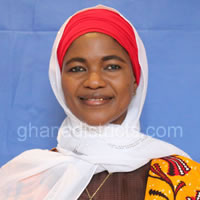Physical Features
The physical features of the Chereponi District is made up of natural environment namely location and size, climate, vegetation, relief and drainage, the social and cultural environment in which the people live. The physical features are therefore essential elements or factors affecting the socio-economic development of the Municipality.
Location and area
The Chereponi District is located between latitudes 100 10” and 100 20” N eastwards and longitude 100 10” N and 100 201 northwards. It shares boundaries with four Districts: Gushegu District to the West; Bunkpurugu -Yunyoo District to the North; Saboba and Yendi Districts to the South-West and The Republic of Togo. To the East is bordered by River Oti. It has a total land area of approximately 1,374.7 Sq. km.
Relief and drainage
The topography of the District is basically undulating with few hills, which provide a good flow for run-off water. The District is underlain by voltaian rocks normally suitable for boreholes for rural water supply. Alluvial valleys suitable for rice production exist in some areas of the District. There is considerable soil erosion in the District due to bad farming practices. During the rainy season, water normally drains into the Oti River, as well as dams and streams in the District along the road sides, washing the roads and making them not accessible to motor.
Climate and vegetation
The District is located in the savannah ecological zone. The climate is characterized by wet and dry seasons of equal lengths of six months. Annual rainfall ranges between 1000mm to 4000mm or less, falling between May and October. A long dry period follows the end of the rainy season from November to April. Temperature is generally high throughout the year and ranges between 210 C and 410 C.
Vegetation
Vegetation in the District is the guinea savannah type which is mostly grass interspersed with drought resistant trees. The common tree species are the “dawadawa” and shea trees. The vegetation is greenish only in the rainy season and very dry in the harmattan period.
Agriculture is the mainstay of the people. About 40 percent of the land area is used for agricultural purposes. However, a greater portion is left uncultivated and farming is mostly done on subsistence basis with small farm holdings which averages about two acres.
Farmers cultivate large areas of maize, yam and rice for commercial purposes. Acquisition of land for farming is not a problem in the District. The District is known for its production of soya beans.
Date Created : 11/17/2017 5:56:50 AM




 facebook
facebook X (twitter)
X (twitter) Youtube
Youtube +233 593 831 280
+233 593 831 280 0800 430 430
0800 430 430 GPS: GE-231-4383
GPS: GE-231-4383 info@ghanadistricts.com
info@ghanadistricts.com Box GP1044, Accra, Ghana
Box GP1044, Accra, Ghana